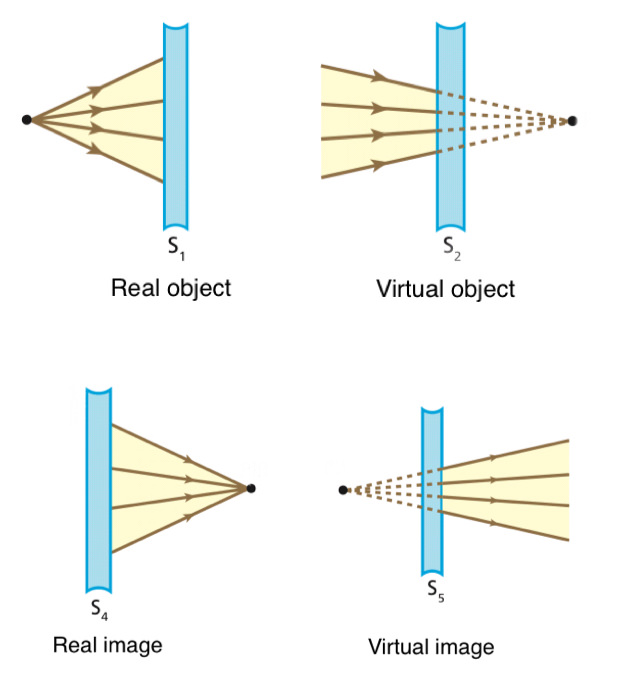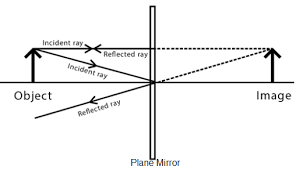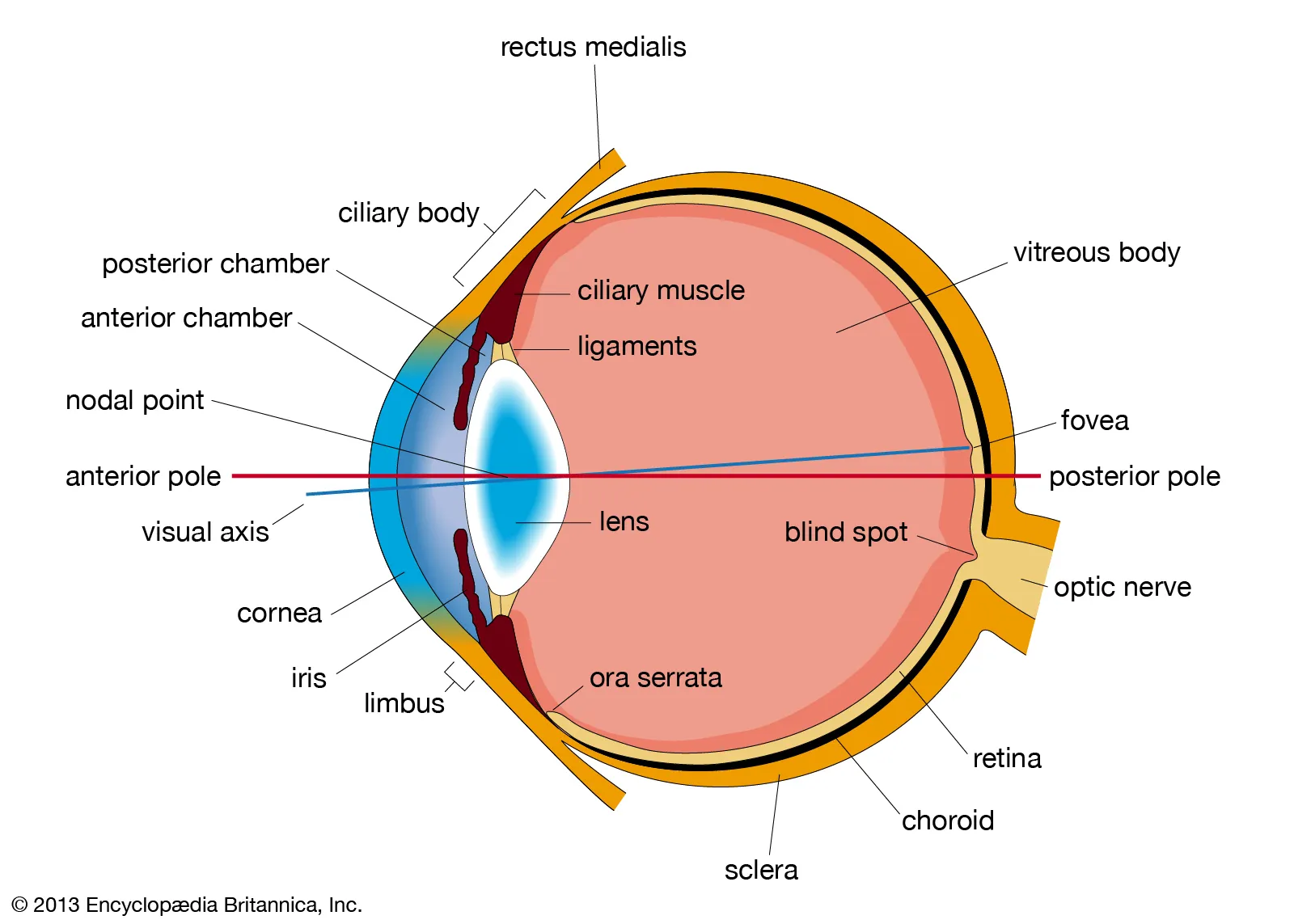
CBSE Class 8 Science Notes Chapter 13: Here are the notes for CBSE Class 8 Science Chapter 13 Light, which are beneficial for students preparing for Class 10 exams. In this chapter, students learn about how light reflects off surfaces, how it bends when it passes through different materials, and how mirrors and lenses form images.
The chapter also explains how the human eye works and how we see colors. It highlights the importance of light in our everyday life and helps students understand its role in nature and technology.CBSE Class 8 Science Notes Chapter 13 Light Overview
These notes are prepared by subject experts of Physics Wallah for CBSE Class 8 Science Chapter 13, "Light." They provide a comprehensive overview of the chapter, covering key topics such as the behavior of light, including reflection, refraction, and the formation of images by mirrors and lenses. The notes are designed to help students build a strong foundation in understanding the principles of light, which are essential for mastering more advanced concepts in later classes.CBSE Class 8 Science Notes Chapter 13 Light PDF
The PDF link for CBSE Class 8 Science Notes Chapter 13 Light is available below. These notes provide a detailed and structured explanation of the chapter, covering essential concepts such as reflection, refraction, and the properties of light. They are a valuable resource for students to effectively grasp and revise the key points discussed in the chapter.CBSE Class 8 Science Notes Chapter 13 Light PDF
CBSE Class 8 Science Notes Chapter 13 Light
Below we have provided CBSE Class 8 Science Notes Chapter 13 Light for students to help them understand the chapter better and to score good marks in their examination.Introduction to Light
The world is perceived mainly through our senses, with sight being one of the most crucial. We can only see an object when light from it enters our eyes, either because the object emits light or reflects it. Light is a form of energy that allows us to see, with the Sun being a primary source. It typically refers to visible light, which is detectable by the human eye and essential for vision.How Do We See Objects?
Seeing objects involves more than just our eyes. Light from a source strikes an object and then reflects back into our eyes, enabling us to perceive the object. This process is fundamental to our understanding and interaction with the world around us.
Laws of Reflection
Reflection:
Light reflects off surfaces, and any well-polished or shiny surface can act as a mirror. The process of light bouncing off surfaces is known as reflection.
Laws of Reflection:
- The ray of light that hits a reflecting surface is called the incident ray , and the ray that bounces back is the reflected ray .
- An imaginary line perpendicular to the reflecting surface at the point of incidence is known as the normal .
- The angle of incidence (∠i) is the angle between the incident ray and the normal, while the angle of reflection (∠r) is the angle between the reflected ray and the normal.
- The angle of incidence (∠i) is always equal to the angle of reflection (∠r), meaning ∠i = ∠r.
- The incident ray, the reflected ray, and the normal all lie on the same plane.
Ray Diagram
A ray diagram is a visual representation that shows the path taken by a narrow beam of light. In these diagrams, light is represented as straight lines or "rays" to illustrate how it travels and interacts with different surfaces. Ray diagrams help in understanding the behavior of light, such as how it reflects off surfaces or refracts when passing through different mediums.
Difference Between Real and Virtual Image

Real Image :
- Formed by the actual convergence of light rays.
- Can be projected onto a screen.
- Typically formed by mirrors or lenses when light rays meet at a point.
- Real images are usually inverted (upside down) relative to the object.
Virtual Image :
- Formed when the outgoing rays from a point on an object appear to diverge from a common point.
- Cannot be projected onto a screen because the light rays do not actually meet.
- Virtual images are always upright as seen in plane mirrors.
Multiple Reflections
- Multiple Reflections occur when two mirrors are inclined to each other, causing the light to bounce back and forth between them. This leads to the formation of multiple images.
- Infinite Images : When an object is placed between two parallel plane mirrors, an infinite number of images can be seen due to continuous reflections between the mirrors. The number of visible images depends on the angle between the mirrors.
CBSE Class 8 Science Notes Chapter 13 FAQs
What is electric current?
Electric current is the flow of electric charge through a conductor. It is measured in amperes (A) and flows from the positive terminal to the negative terminal of a power source.
What is resistance?
Resistance is the opposition to the flow of electric current through a conductor. It is measured in ohms (Ω). Higher resistance means less current flow for a given voltage.
What is the role of a fuse in an electric circuit?
A fuse is a safety device that protects an electric circuit by breaking the circuit if the current flow exceeds a certain level, preventing potential damage or fire hazards.
What is an electric circuit?
An electric circuit is a closed loop through which electric current flows. It includes a power source (like a battery), conductors (wires), and a load (such as a bulb or resistor).
How is electric current measured?
Electric current is measured using an instrument called an ammeter, which is connected in series with the circuit.
Talk to a counsellorHave doubts? Our support team will be happy to assist you!

Check out these Related Articles
Free Learning Resources
PW Books
Notes (Class 10-12)
PW Study Materials
Notes (Class 6-9)
Ncert Solutions
Govt Exams
Class 6th to 12th Online Courses
Govt Job Exams Courses
UPSC Coaching
Defence Exam Coaching
Gate Exam Coaching
Other Exams
Know about Physics Wallah
Physics Wallah is an Indian edtech platform that provides accessible & comprehensive learning experiences to students from Class 6th to postgraduate level. We also provide extensive NCERT solutions, sample paper, NEET, JEE Mains, BITSAT previous year papers & more such resources to students. Physics Wallah also caters to over 3.5 million registered students and over 78 lakh+ Youtube subscribers with 4.8 rating on its app.
We Stand Out because
We provide students with intensive courses with India’s qualified & experienced faculties & mentors. PW strives to make the learning experience comprehensive and accessible for students of all sections of society. We believe in empowering every single student who couldn't dream of a good career in engineering and medical field earlier.
Our Key Focus Areas
Physics Wallah's main focus is to make the learning experience as economical as possible for all students. With our affordable courses like Lakshya, Udaan and Arjuna and many others, we have been able to provide a platform for lakhs of aspirants. From providing Chemistry, Maths, Physics formula to giving e-books of eminent authors like RD Sharma, RS Aggarwal and Lakhmir Singh, PW focuses on every single student's need for preparation.
What Makes Us Different
Physics Wallah strives to develop a comprehensive pedagogical structure for students, where they get a state-of-the-art learning experience with study material and resources. Apart from catering students preparing for JEE Mains and NEET, PW also provides study material for each state board like Uttar Pradesh, Bihar, and others
Copyright © 2025 Physicswallah Limited All rights reserved.
Get App
 In a plane mirror, the image formed is always virtual (cannot be projected on a screen), erect (upright), and the same size as the object. The distance between the object and the mirror is equal to the distance between the image and the mirror. The image undergoes lateral inversion, meaning the left and right sides are reversed.
In a plane mirror, the image formed is always virtual (cannot be projected on a screen), erect (upright), and the same size as the object. The distance between the object and the mirror is equal to the distance between the image and the mirror. The image undergoes lateral inversion, meaning the left and right sides are reversed.
 The human eye is a spherical organ, approximately 2.3 cm in diameter, responsible for vision. It enables us to perceive colors, depth, and details in our surroundings. Here’s how its various parts contribute to vision:
The human eye is a spherical organ, approximately 2.3 cm in diameter, responsible for vision. It enables us to perceive colors, depth, and details in our surroundings. Here’s how its various parts contribute to vision:








